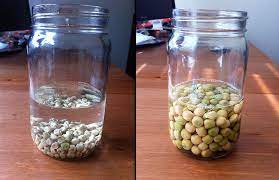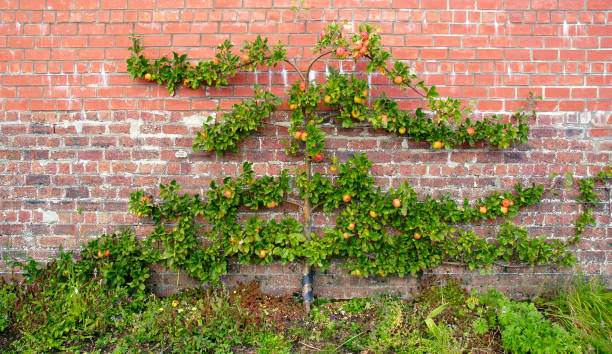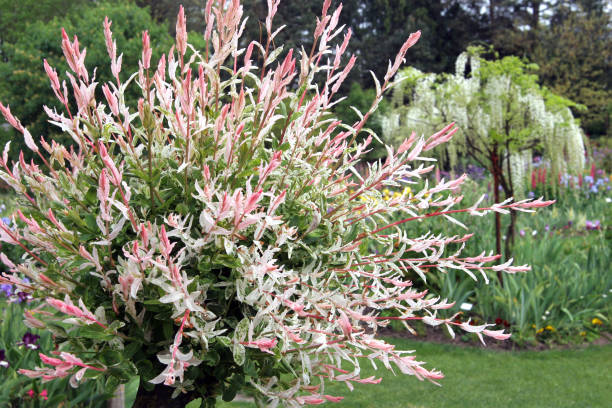Do you Soak Seeds Before Planting? 2 Best Types
Imagine giving your garden a head start, a secret boost that kick-starts your seeds into vibrant life. That’s precisely what soaking seeds before planting does. It’s like nature’s pre-game warm-up, where a little prep work can make all the difference.
So, do you soak seeds before planting? Let’s dive into this horticultural hack that can turn your garden dreams into a flourishing reality.
Do you Soak Seeds Before Planting?
It is common practice to soak seeds. Soaking seeds can significantly increase germination rates and ensure more uniform growth in your garden. Soaking also helps revive older or partially dried-out seeds, enhancing their viability.
However, it’s important to research the specific requirements of the seeds you’re planting, as not all seeds benefit from soaking, and some may be harmed by it.

Several benefits of soaking seeds:
Faster Germination:
Soaking seeds can soften their outer seed coat, allowing moisture to penetrate more easily. This can lead to quicker germination, helping your plants get a head start.
Improved Germination Rate:
Some seeds have hard outer shells that may inhibit germination. Soaking can help break down these barriers and increase the chances of successful germination.
Even Germination:
Soaking can help ensure that seeds of varying sizes and ages germinate at a similar rate, leading to more uniform growth in your garden or crop.
Increased Seed Viability:
Soaking can revive older or partially dried-out seeds by rehydrating them, increasing their chances of sprouting.
Enhanced Root Growth:
Soaked seeds often develop stronger and healthier root systems, which can be crucial for the plant’s long-term health.
However, it’s essential to research the specific requirements of the seeds you’re planting, as not all seeds benefit from soaking, and some may be harmed by it. Additionally, be mindful of soaking times and water temperature, as different seeds have different preferences.
What types of seeds benefit from soaking before planting?
Seeds with Thick Coats:
Seeds with hard or thick outer coats, such as morning glory, sweet pea, or nasturtium seeds, can benefit from soaking. Soaking helps soften the outer seed coat, allowing water to penetrate more easily and promoting germination.
Soaking times can vary depending on the seed type, but overnight soaking is often recommended.
Wrinkled Seeds:
Wrinkled seeds, like those of peas or beans, can also benefit from soaking. Soaking helps rehydrate these seeds, making them swell and soften. This can lead to faster and more uniform germination. Soaking for 8-12 hours or overnight is typically suitable for these seeds.
For Example, These include seeds from plants like beans, peas, sunflowers, and morning glories.
How to soak your seeds?
Add Water:
Pour enough water into the container to fully submerge the seeds. The water should be at room temperature; avoid using hot or cold water.
Soaking Time:
Different seeds require different soaking times. Typically, you can soak seeds for 8 to 12 hours or overnight. Some seeds may need a shorter soak, while others, like large beans, might benefit from a longer soak.
Stir Occasionally:
Gently stir the seeds in the water to ensure all seeds get evenly soaked. This helps break any air bubbles that may prevent water from reaching the seeds.
Plant Immediately:
Once your seeds are soaked and rinsed, plant them in your garden, pots, or seed trays following the recommended planting depth and spacing for each type of seed.
Keep Moist:
After planting, make sure to keep the soil consistently moist but not waterlogged to encourage germination.
Period for Soaking seeds:
Soaking times for seeds typically range from 12 to 24 hours, or overnight. Specific soaking durations may vary depending on the type of seed, so it’s important to consult seed packets or gardening references for precise recommendations. Avoid excessive soaking to prevent issues like seed rot and reduced viability.
What happens when seeds are soaked too long?
Soaking seeds for too long can have negative consequences and may harm their viability and chances of successful germination. Here are some potential issues that can arise from soaking seeds excessively:
Seed Rot:
Prolonged soaking can lead to seed rot. Seeds submerged in water for extended periods become susceptible to fungal and bacterial growth, which can damage or kill the seeds.
Reduced Oxygen:
Seeds need oxygen to germinate. Excessive soaking can deprive seeds of oxygen, leading to suffocation and inhibiting germination.
Loss of Nutrients:
Soaking for too long can leach out essential nutrients stored within the seed, which are needed for germination and early seedling growth.
Mold Growth:
The prolonged exposure to moisture can encourage the growth of mould on the seeds, which can further reduce their viability.
Seed Splitting:
Some seeds may swell and split if soaked for an extended period, making them less likely to germinate successfully.
Other Germination methods besides soaking:
Scarification:
This involves scratching or nicking the seed coat to break its dormancy. It’s common for seeds with hard shells, like morning glories or sweet peas.
Direct Sowing:
Some seeds, particularly those of hardy plants, can be sown directly into the ground without any pre-treatment.
Stratification:
Seeds are exposed to cold, moist conditions for a specific period, simulating winter. This process is essential for many perennial plants.
Paper Towel Method:
Seeds are placed between damp paper towels or in a wet paper towel inside a sealed plastic bag to encourage germination before planting.
FAQs
Why should I soak seeds before planting?
Soaking seeds can improve germination rates, speed up germination, and help break dormancy in certain seeds with hard shells.
Which types of seeds benefit from soaking?
Seeds with hard or thick seed coats, like beans, peas, sunflowers, and morning glories, often benefit from soaking.
How long should I soak the seeds?
Soaking times vary but typically range from 8 to 12 hours or overnight. Refer to seed packets or gardening resources for specific recommendations.
Can I over-soak seeds?
Yes, over-soaking can lead to issues like seed rot, reduced viability, and mould growth. It’s crucial to follow recommended soaking times.
Do all seeds require soaking before planting?
No, not all seeds benefit from soaking. Some seeds may be harmed by it. Research the requirements of the specific seeds you plan to grow.
What’s the best water temperature for soaking seeds?
Room temperature water is generally ideal for soaking seeds. Avoid using hot or cold water.
Should I rinse the seeds after soaking them?
Yes, it’s a good practice to rinse soaked seeds with clean water to remove any residue before planting.
Can I store soaked seeds for later planting?
It’s generally best to plant soaked seeds immediately after soaking to prevent issues like mould growth and loss of viability.
Are there alternative methods to enhance germination besides soaking?
Yes, alternative methods include scarification (scratching seed coats), stratification (exposing seeds to cold), and direct sowing, depending on the type of seeds.
What if my seeds still don’t germinate after soaking?
– If seeds don’t germinate, it could be due to factors like poor seed quality, improper planting depth, or unfavourable environmental conditions. Troubleshoot accordingly.
Conclusion:
In conclusion, the practice of soaking seeds before planting is a valuable technique that can significantly enhance the germination process for many plant species. By softening hard seed coats and jumpstarting hydration, soaking can lead to quicker and more successful sprouting.
However, it’s important to remember that not all seeds require this treatment, and over-soaking can be detrimental. To maximize your gardening success, it’s advisable to research the specific needs of the seeds you plan to grow, follow recommended soaking times, and maintain proper planting.
Soaking seeds is just one tool in a gardener’s toolkit, and when used judiciously, it can contribute to healthier, more vibrant plants in your garden or crop.




